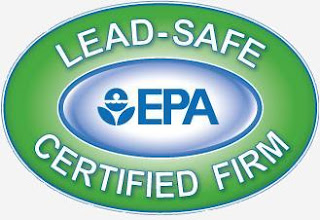To my dismay, I was recently reminded by my remodeler that his labor and material costs may go up on projects involving any homes built prior to January 1, 1978.
Why? Because, in my experience, labor costs can be as much or more than materials. The Environmental Protection Agency (EPA) issued a rule requiring the use of lead-safe practices that all contractors must comply with effective April 22, 2010. Though enforcement was temporarily delayed to allow contractors to meet their certification requirements in June, all firms are required to be fully certified as of October 1, 2010.
The new regulation called the Renovation, Repair, and Painting (RRP) Rule, aimed at preventing lead-poisoning, dictates that firms performing renovation and repair must be certified and follow specific work practices to prevent lead contamination if working on pre-1978 homes which are determined to have lead hazard. As an EPA-certified renovator, non-compliance can include fines of up to $37,500 per day so it was certainly understandable to hear my remodeler emphatically address this issue with me.
But what does this really mean? In the remodeling industry, it has a huge impact. All the extra steps required by the EPA–from initial lead-testing to by-the-book material handling and disposal to documentation–will increase overall costs for both the contractor and the homeowner. While the financial ramifications of this new rule has yet to be accurately quantified, some projections for direct and indirect costs are coming in at about 15% and likely more depending on the scope of the renovation.
Throughout this blog post, you will find highlighted text that links directly to some very interesting information that I have culled online regarding the RRP Rule from the EPA website along with third-party insights from remodeling sources. Also, here's a quick consumer FAQ on the common concerns that have come up since I heard about this issue percolating at the beginning of the year.
What is RRP?
Good question. I didn't even know what it actually stood for until a few months ago. It is the Renovation, Repair and Paint (Rule) that went into effect on April 22, 2010. It defines the specific procedures to be followed on any professionally remodeled homes that were built built prior to January 1, 1978.
I do want to remodel my home but what happens if my house is that old?
If you are considering having a professional renovate your home, he/she must first confirm the build date of the house and determine potential lead hazards by way of a lead test if its age falls on or before January 1, 1978.
Who will do this test and how much does it cost?
Lead tests must be EPA-certified as part of the RRP compliance. You may utilize a dedicated lead testing firm or inquire with your certified contractor if he would perform this service. Tests can vary from $200 to $600 dollars depending on the company.
What happens if the test come up positive for lead?
The contractor is obligated by law to provide you with pre-renovation lead-hazard pamphlet that you must sign acknowledging that you have been provided with and understand the information on the nature of your hazards as well as steps you can take to safely handle your renovation. Any lead-hazard areas affected by the remodel will be dealt with in accordance to the strict procedures set by the EPA. You are also obligated to disclose the existence of lead hazards in your home should you decide to sell it.
Can't I just select a non-certified contractor who will do this for less cost and less hassle?
Essentially, all contractors who renovate homes of all types and age are required by federal law to be EPA-certified or face fines for non-compliance. I suppose, in theory, you may be able to secure the services of one, certified or otherwise, who is willing to do this with disregard to the existing law. However, to engage in such a practice could potentially expose you to a stop-work order, at the very least, and with an even greater financially liability, at worst.
So how much is this really going to cost me?
Because the law is so new, contractors are still trying to figure out what this additional "cost of doing business" will be and until such time that they have fine-tuned their costing schedules to reflect the added expenses involved in this "new way" of remodeling, the best projections we have at the moment point towards a 15% increase. This percentage can vary by geographic location, size of the remodel and extent of the lead hazards found on the premises.
skip to main |
skip to sidebar
a blog on kitchens and baths by Q Design Solution
Contact Me!
Q Design Solution, Inc.
P.O. Box 473
Victor, ID 83455
o) 208.360.0561
f) 208.354.0561
Or email me!
Available by Appointment
P.O. Box 473
Victor, ID 83455
o) 208.360.0561
f) 208.354.0561
Available by Appointment
Archives
Search
Categories
- AB1953 (1)
- Appliances (2)
- Bathrooms (1)
- Cabinetry (1)
- Company Policies (2)
- Concrete (1)
- Countertops (3)
- Facebook (1)
- Green Ideas (3)
- Hardware (1)
- Industry Sound Bytes (1)
- K/BIS (1)
- Kitchens (2)
- Lead (1)
- Lighting (4)
- Low-Flow Toilets (1)
- Plumbing (2)
- Quick Updates (2)
- Real Estate (2)
- Recycling (3)
- RRP Rule (1)
- Sale (2)
- Salvage (1)
- Tips-Design (1)
- Tips-Remodeling (2)
- Ventilation (1)
- Video Replay (1)
©2009 Design Cue courtesy of Free Wordpress Themes and Free Blogger Templates Content reproduction is permitted only upon approval of Q Design Solution, Inc.

